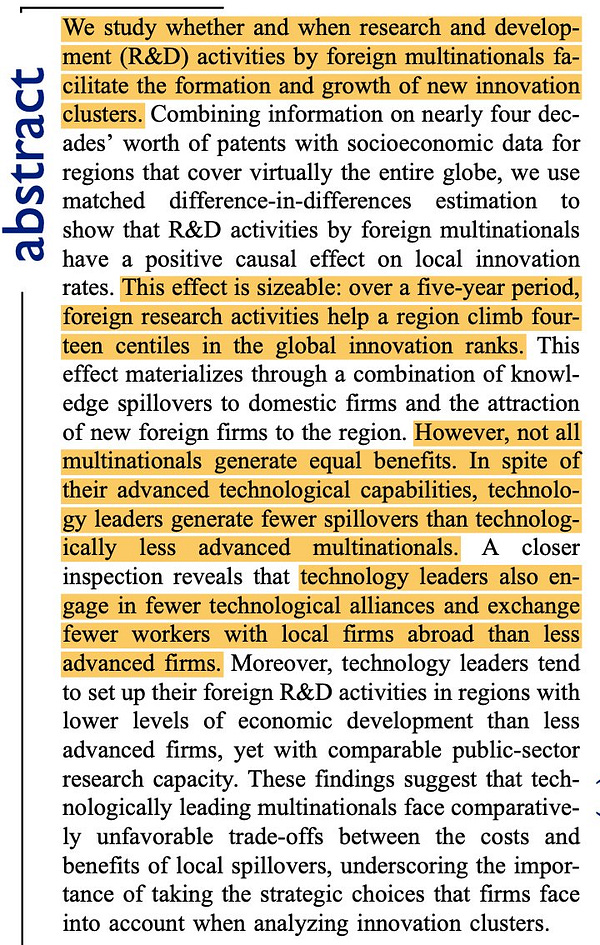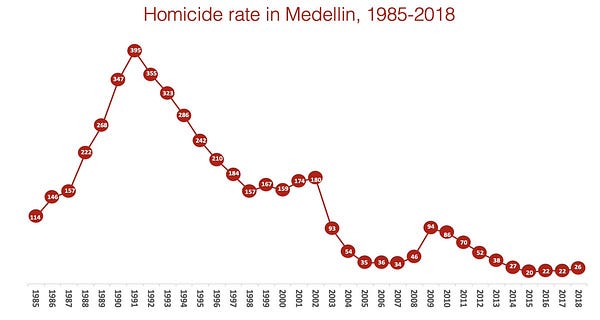Best of #econtwitter - Week of May 15, 2022 [1/3]
Welcome readers old and new to this week’s edition of Best of Econtwitter. Thanks to those sharing suggestions, over email or on Twitter @just_economics.
This is part one of three.
Paper summary threads

Our paper on workplace sexual harassment is now out in the QJE! (with @OlleFolke).
A thread on what we do and find, using nationally representative survey data, administrative data, and a survey experiment.
Read the open-access paper here: doi.org/10.1093/qje/qj…


Women face three times as much sexual harassment from colleagues and managers as men do. This exposure increases with the share of men in the workplace. Men’s harassment has the opposite pattern and exceeds women’s in strongly female-dominated workplaces. (Left figure)

^it is too bad that Substack cuts off the images in tweets, you can click through to see (Swedish data, data points are estimates from an AKM model)

📢New @cepr_org paper with @enrico_berkes and Martí Mestieri on Global Innovation Spillovers and Productivity using historical patent data covering a large set of countries over the past century:📢
1/n


CEPR @cepr_org

The 20th Annual @IIOC_IO conference was a blast! There were so many interesting papers across the whole range of industrial organization topics.
editorialexpress.com/conference/IIO…
Here are a few of my favorites (with an obvious innovation bias):
🧵


A paper I am really proud of is coming in print! It is joint work with the great @crescenzi_r (LSE) and @FrankNeffke (Harvard Growth Lab).
It asks: What is the impact of foreign investments by firms on innovation in cities? What is the role of firm heterogeneity in this? Short🧵



Hey #EconTwitter, do you use clustered standard errors? Do you worry about reliable inference? Our new guide explains when you should worry, when you shouldn't, and how to make better inferences. A joint 🧵 with @jgmQED and @MortenEcon. 1/

New version of our survey on TWFE and DID, with an application: we revisit @JustinWolfers's AER paper on unilateral divorce laws, using several new DID estimators. papers.ssrn.com/sol3/papers.cf…
Dofile may be useful for those trying to implement those estimators:

🚨🚨New publication alert!!🚨🚨
Our paper “Some Children Left Behind: Variation in the Effects of an Educational Intervention” is now out at the Journal of Econometrics @JEconometrics! 🎉🎉🎉
Access it FREE via this link for the next 50 days: authors.elsevier.com/a/1f32A15DjiBH…
1/N

Arxiv released my working paper with Tatiana Komarova today: arxiv.org/pdf/2205.05779…
This is my first foray into econometrics, though I find the economic motivation exciting.
On the economics, we study the identification and estimation of decision bracketing. A thread:

Public goods

Hi #EconTwitter and #SocialScience.
James MacKinnon, Morten Nielsen, and I are excited to announce our @Stata package summclust. It is designed to assess the reliability of conventional cluster-robust inference. It also calculates improved standard errors.🧵 1/

ALL HANDS ON DECK: It's time to create a National Zoning Atlas to democratize information about zoning - & help all of us understand its impact: bit.ly/3KJTvf3
A small coordinating team will sit in the @CornellAAP Legal Constructs Lab (bit.ly/3E29of0), but...


🚨Announcement!🚨 Since 2020, @devdatalab has been working with @NITI Aayog to address last-mile data delivery challenges in India. Today NITI launched NDAP, a paradigm shift in the world of govt open data platforms. Check it out! ndap.niti.gov.in @OTSi_India @IDinsight

You demanded and we supplied! Here is an "Economists for Ukraine" t-shirt you can buy & wear proudly (other colors & women's T available too).
Buy one for the economist in your life!
Profits will benefit humanitarian aid in Ukraine.
bonfire.com/economists-for…







